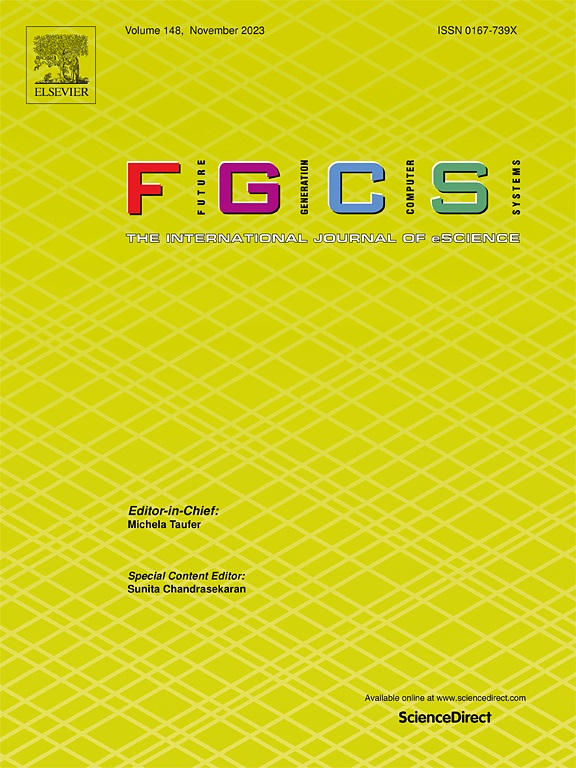医疗保健应用中并行分割学习的数据分布感知聚类
IF 6.2
2区 计算机科学
Q1 COMPUTER SCIENCE, THEORY & METHODS
Future Generation Computer Systems-The International Journal of Escience
Pub Date : 2025-06-09
DOI:10.1016/j.future.2025.107911
引用次数: 0
摘要
分裂学习是一种很有前途的保护隐私的机器学习方法,它通过将模型训练分散到客户端设备和中央服务器上。然而,分裂学习在其传统方法中表现出一定程度的缓慢,主要是由于设备的串行处理。最近的研究努力通过引入并行性来解决这一挑战,从而加速了分裂学习过程。然而,现有的分割学习方法往往忽略了客户端设备之间数据分布的关键方面。本文章由计算机程序翻译,如有差异,请以英文原文为准。
Data distribution aware clustering for parallel split learning in healthcare applications
Split learning, a promising approach in privacy-preserving machine learning, decentralizes model training by dividing it among client devices and a central server. However, split learning has exhibited a certain level of slowness in its vanilla approach, mainly due to the serial processing of devices. Recent research endeavors have addressed this challenge by introducing parallelism and thus accelerating the split learning process. However, the existing split learning methodologies often overlook the critical aspect of data distribution among client devices.
This paper introduces a Data Distribution Aware Clustering-based Parallel Split Learning (DCSL), a scheme purposefully crafted to address the complexities stemming from non-identically and non-independently distributed (non-IID) data among client devices engaged in the split learning paradigm. In healthcare applications, comprehending the intricacies of data distribution is imperative, particularly given the non-IID nature of medical datasets, to ensure accurate analysis and decision-making. The DCSL leverages a novel clustering technique to create clusters of medical client devices, considering the data distributions of their local datasets, and employs parallel model training within the device clusters. It enhances model convergence and reduces training latency by optimizing the cluster formation. Extensive experiments demonstrate that DCSL outperforms traditional split learning approaches, significantly improving accuracy and reducing training latency across various applications.
求助全文
通过发布文献求助,成功后即可免费获取论文全文。
去求助
来源期刊
CiteScore
19.90
自引率
2.70%
发文量
376
审稿时长
10.6 months
期刊介绍:
Computing infrastructures and systems are constantly evolving, resulting in increasingly complex and collaborative scientific applications. To cope with these advancements, there is a growing need for collaborative tools that can effectively map, control, and execute these applications.
Furthermore, with the explosion of Big Data, there is a requirement for innovative methods and infrastructures to collect, analyze, and derive meaningful insights from the vast amount of data generated. This necessitates the integration of computational and storage capabilities, databases, sensors, and human collaboration.
Future Generation Computer Systems aims to pioneer advancements in distributed systems, collaborative environments, high-performance computing, and Big Data analytics. It strives to stay at the forefront of developments in grids, clouds, and the Internet of Things (IoT) to effectively address the challenges posed by these wide-area, fully distributed sensing and computing systems.

 求助内容:
求助内容: 应助结果提醒方式:
应助结果提醒方式:


